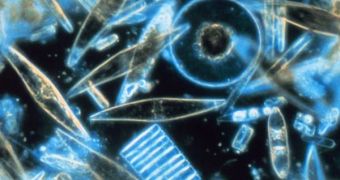Producing solar panels based on silicon technologies is still a very expensive way of addressing issues such as climate change and global warming, and the manufacturing process still presents fairly high costs. This means that the majority of the people will not be able to afford to buy and install solar panels on their homes. Oregon State University (OSU) engineers believe they may have found an answer to this problem, as they have discovered that diatoms, ancient life forms that were created around the Jurassic Period, can provide a cheap alternative to silicon in solar panel construction.
Their innovation will not lower the costs for the solar cells in the strictest of senses, in that production costs for the new production method will probably be a bit greater than those now practiced by the silicon-based industry. However, the electricity-generating potential is increased three folds, which means that a few of these panels could be jointly purchased by two or three neighboring houses and the power split between them. Thus, the costs will be lower for each household, but the owners will receive the desired amount of electricity from the local grid.
Diatoms are the basis of life in the oceans, a species of plankton composed of eukaryotic algae, “dressed up” in a unique silica (hydrated silicon dioxide) shell, which makes them ideal for bouncing off light. Also, because they are extremely small, they could provide a natural method of arranging the basic components of solar cells in order, other than the semiconductor technologies used at this point. The latter methods use nanotechnology-grade calculations and processes to ensure that the silicon-based solar panels maximize the electric potential of photons bouncing up and down on them.
Because of the fact that they can produce certain amounts of silica, the microorganisms could be suited to perform tasks in optical systems, semiconductor nanolithography and other such fields as well. Diatoms produce their “shells” – actually a cellular wall – in various shapes and sizes. Theorists hypothesize that, by artificial selection, cultures made of the tiny algae could potentially grow only certain shapes of walls, which would make them of great use in constructing nano-scale materials, without having to go through the complicated processes involved with artificially making these objects.
“Most existing solar cell technology is based on silicon and is nearing the limits of what we may be able to accomplish with that. There's an enormous opportunity to develop different types of solar energy technology, and it's likely that several forms will ultimately all find uses, depending on the situation,” OSU Professor of Chemical Engineering Greg Rorrer explained.
“Dye-sensitized solar cells already exist. What's different in our approach are the steps we take to make these devices, and the potential improvements they offer. Conventional thin-film, photo-synthesizing dyes also take photons from sunlight and transfer it to titanium dioxide, creating electricity. But in this system the photons bounce around more inside the pores of the diatom shell, making it more efficient,” he concluded.

 14 DAY TRIAL //
14 DAY TRIAL //